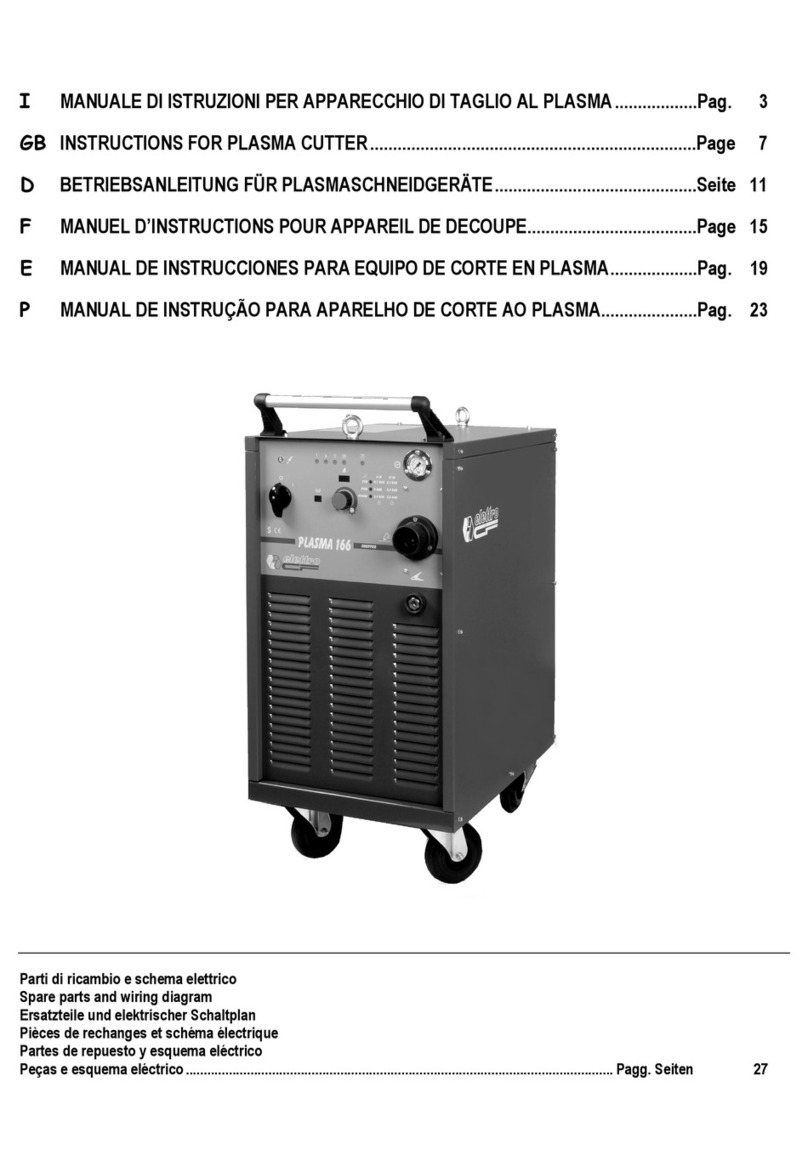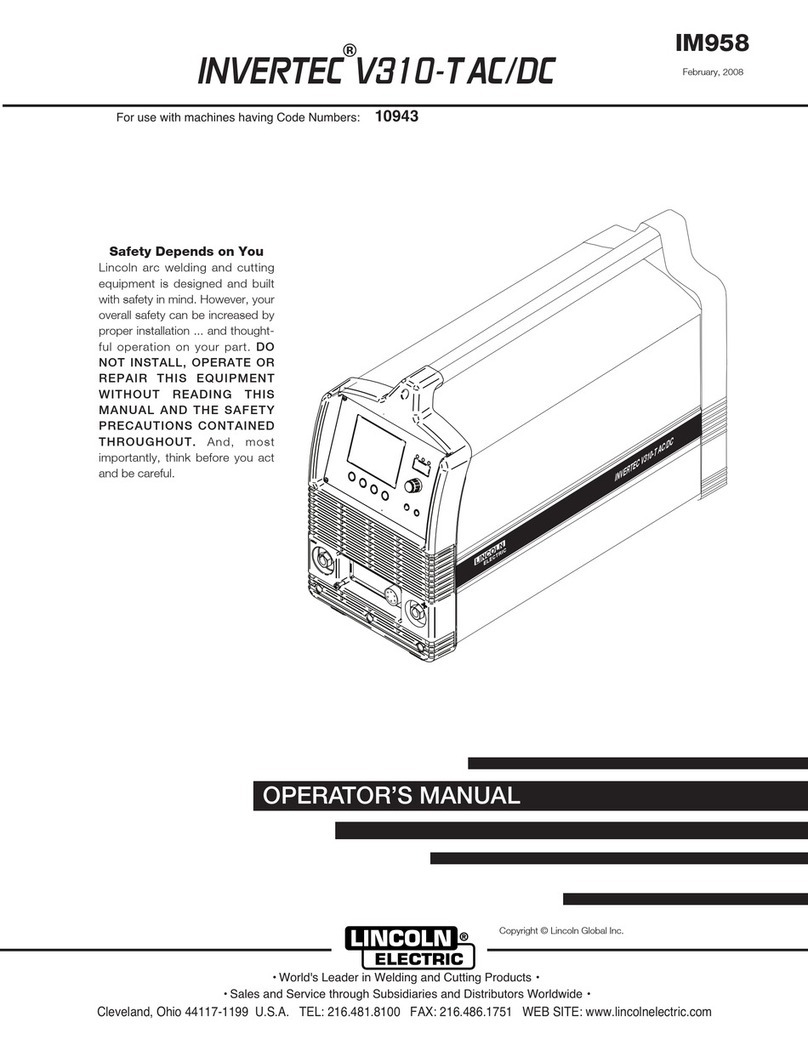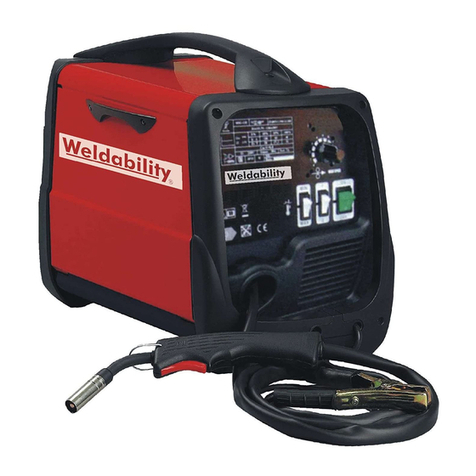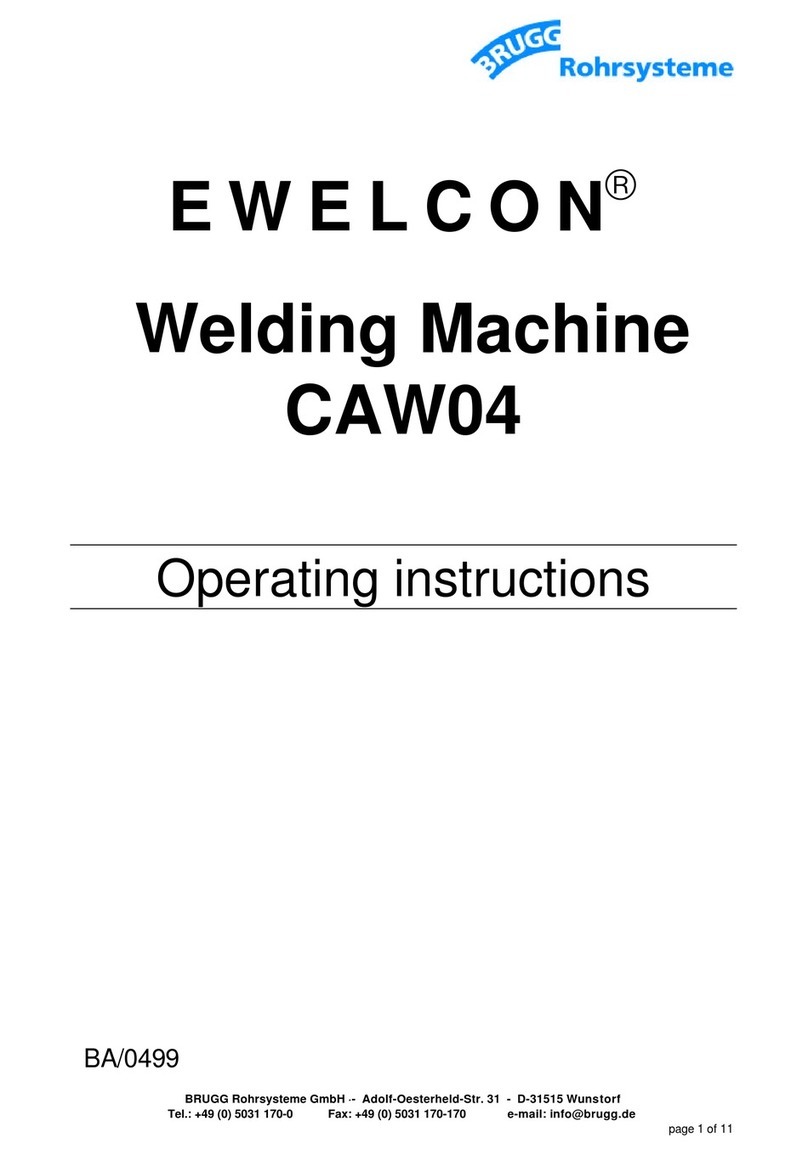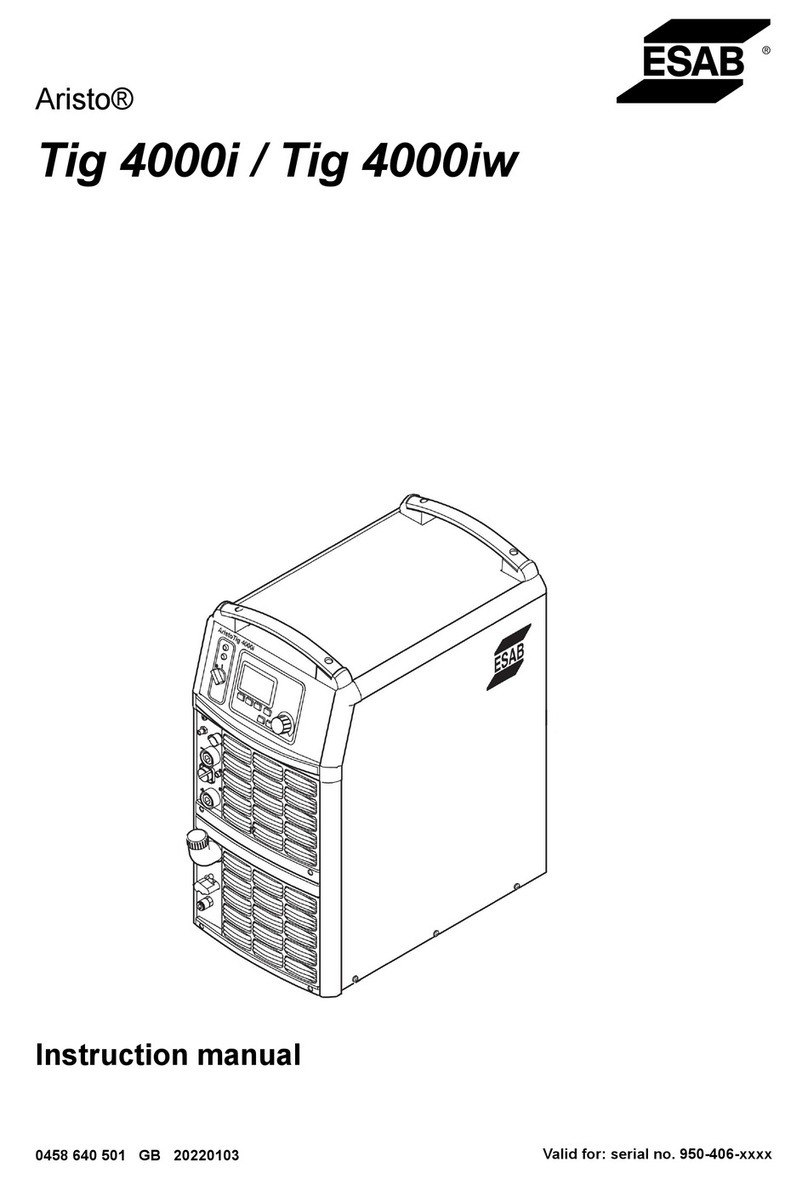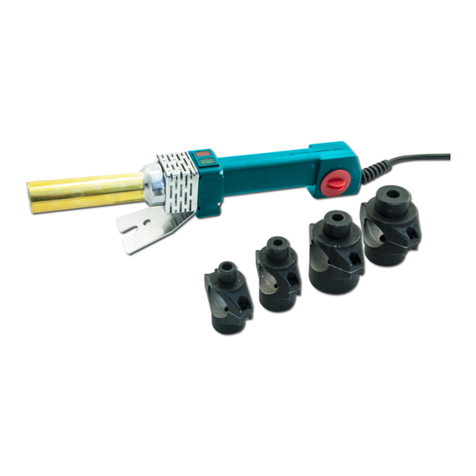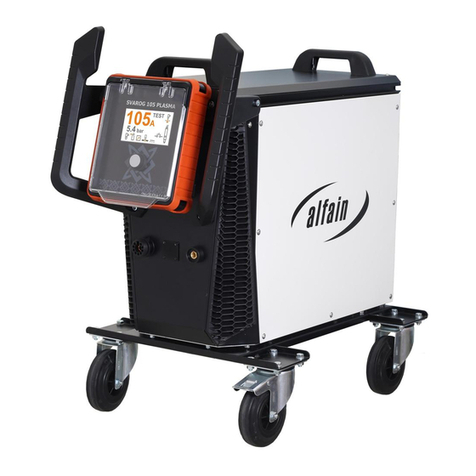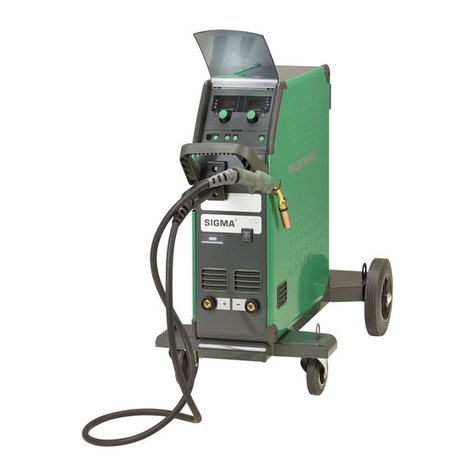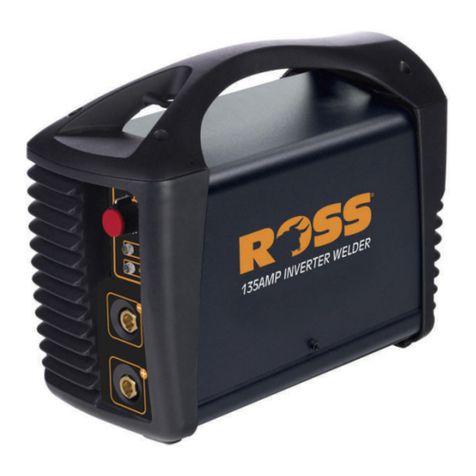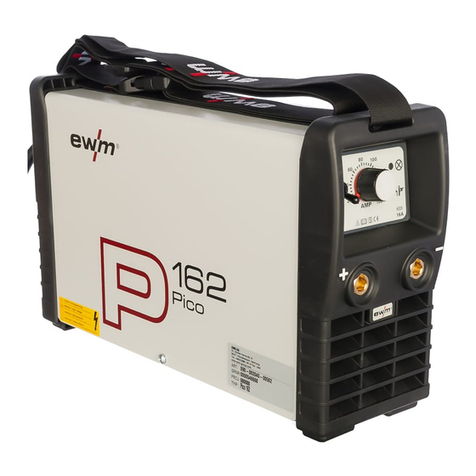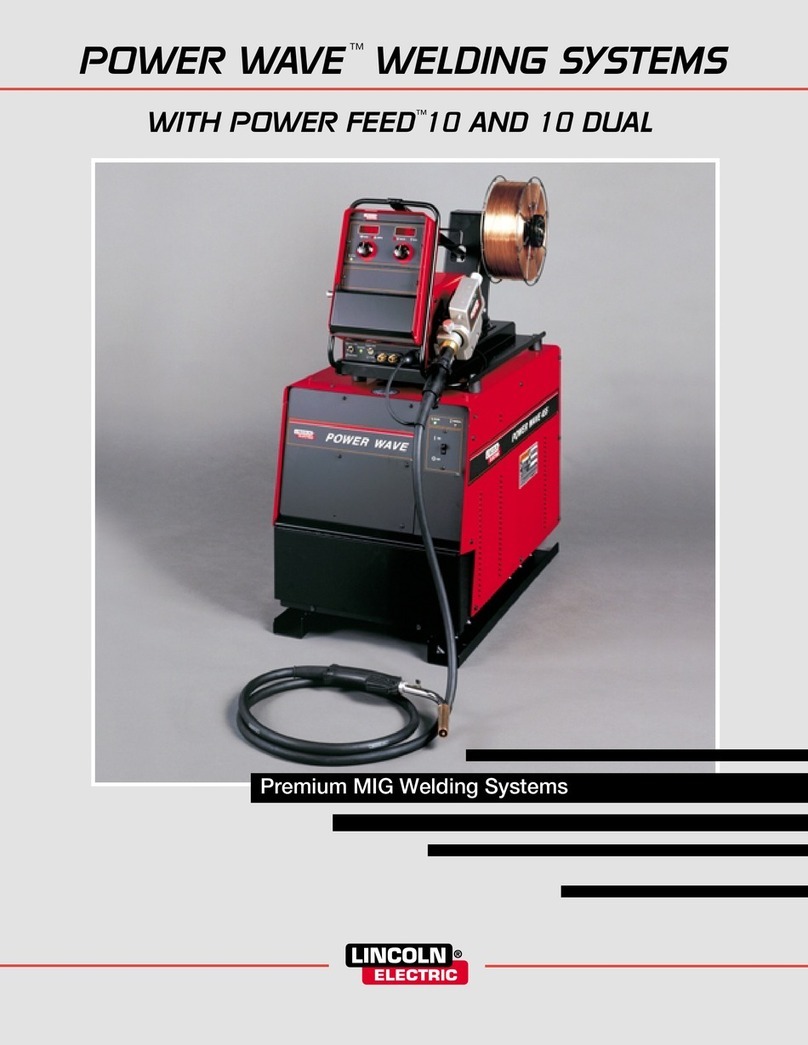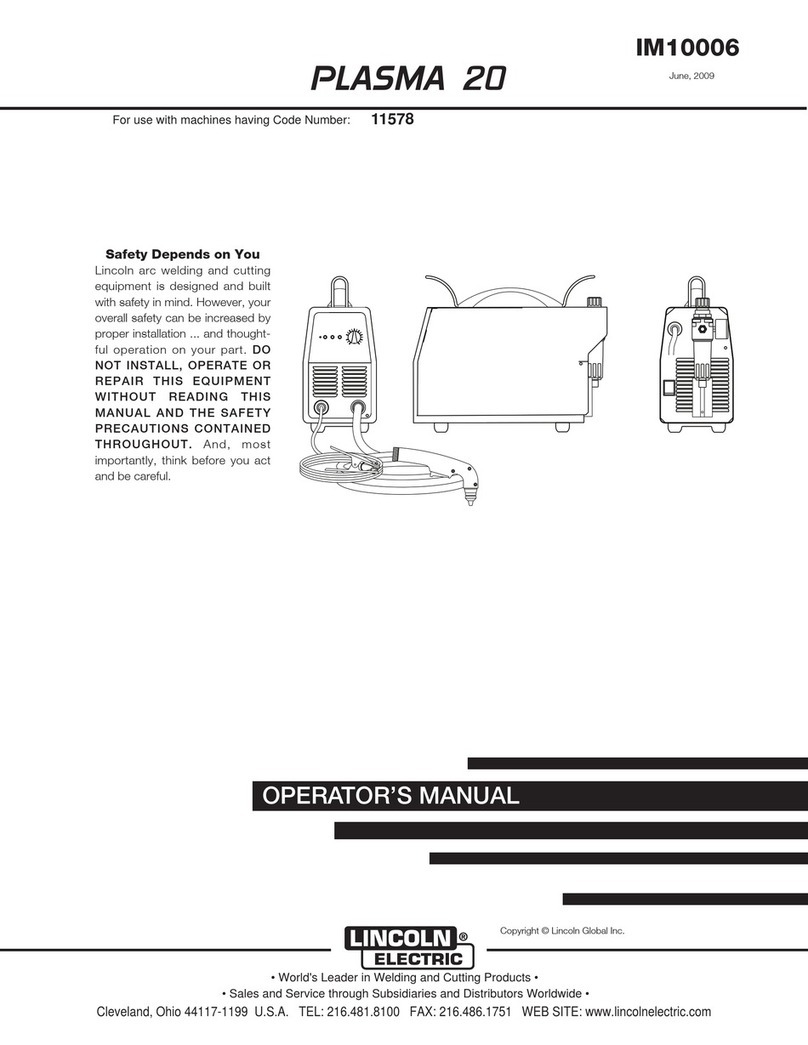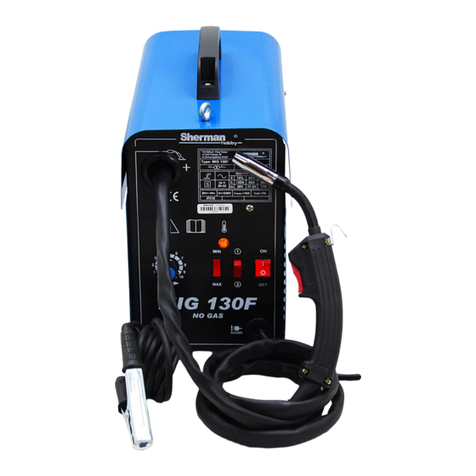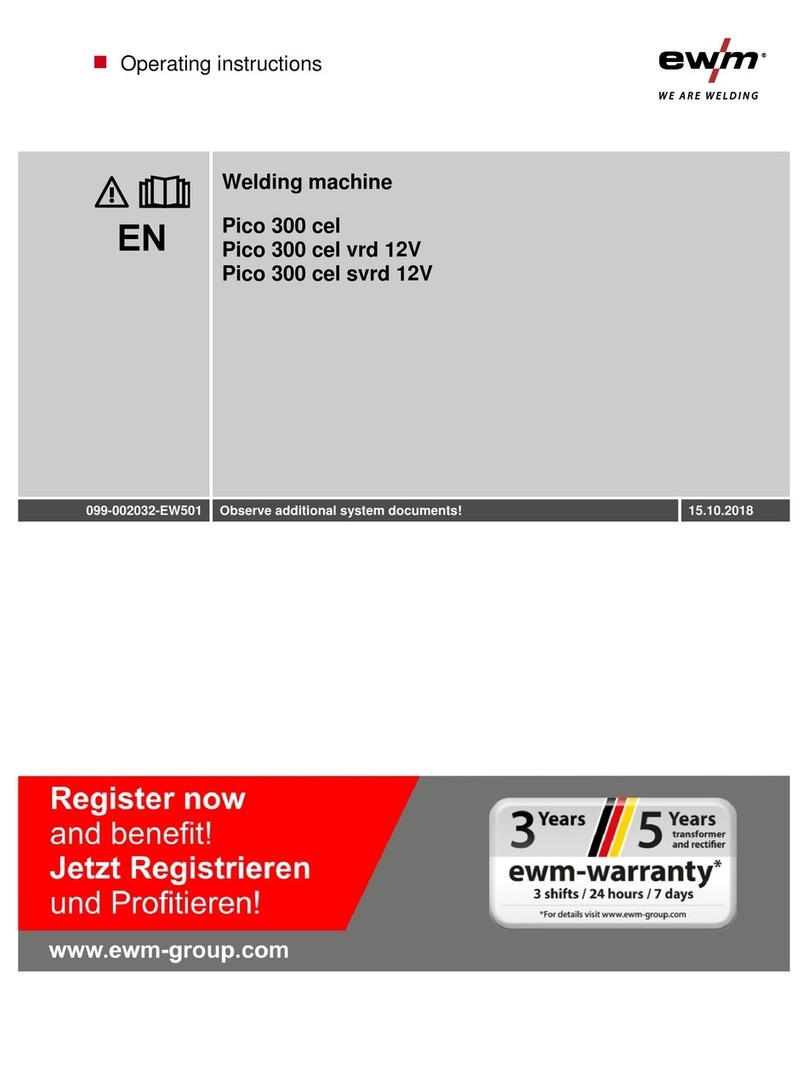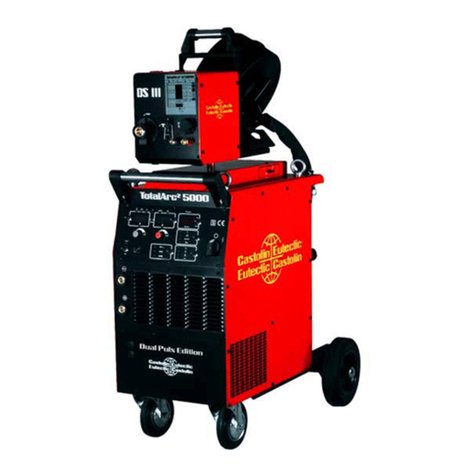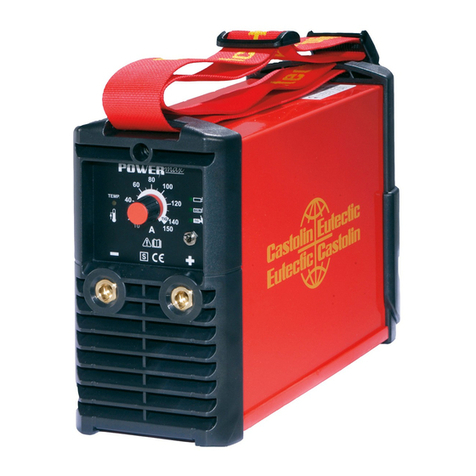4
1 - Description
1.1 - General
GSX 750 rectifier is a power source with
constant current characteristics projected
for welding with coated electrodes using
direct current.
Ideal for welding of Carbon steels, alloyed
steels, stainless steels, cast Iron, Aluminum
and its alloys, Copper and bronze.
Welding current can be continuously ad-
justed to any application in within utiliza-
tion range by means of a crank installed
on front panel.
Suitable for electrodes up to 6,0mm.
GSX 750 rectifier cabinet offers sound
construction and can be easily moved all
about working place. Cart is provided with
brakeage and lifting devices.
2 - Safety procedures
Following care must always be taken prior
to start any welding operation:
Eye protection
Always wear welding helmet with ap-
propriate glass to protect eyes and face
(Table 1).
Welding current (A) Glass nº
30 - 75 8
75 - 200 10
200 - 400 12
over 400 14
Table 1: Adequate eye protection in
relation to welding current
Body protection
Insulating leather gloves must always be
worn on both hands. For complex jobs re-
quiring high moving and precise electrode
holder positioning, wear fine leather glo-
ves. Delicate welding jobs with low current
intensity allow use of woven fabric gloves.
Entire body must be protected against ul-
tra-violet rays emitted by the electrical arc.
Ventilation
Welding should never be performed in
completely enclosed spaces without ade-
quate means to exhaust gases and fumes.
Electrical protection
When handling with any electrical equipment,
special care must be taken to avoid contact
with “live” parts (that is, which are under ten-
sion) without appropriate protection.
Solid, insulating rubber footwear should
be worn, even thus do not step on wet
ground while welding.
Check electrode holder and cables, they
must offer perfect conditions without worn-
out, burnt or unthreaded parts.
Equipment mus be totally disconnected
from mains prior to open cabinet. Ground
cable, supplied together with feeding ca-
ble, must be permanently connected.
Fire protection
Paper, straw, wood, woven fabrics, cot-
ton tow and any other flammable mate-
rial must be removed from welding area.
Containers for inflammable material must
be thoroughly rinsed and dried, free of any
residual vapours.
Chlorinated solvents such as Carbon
tetrachloride and trichloretylene, al-
though not inflammable, if not thorou-
ghly dried originate gases of high toxi-
city when in contact with electrical arc.
In case of fire or short-circuit, never
throw water on any electrical equip-
ment. Immediatly disconnect equip-
ment from mains and use carbonic gas
or chemical powder fire extinguisher to
eliminate flames.















